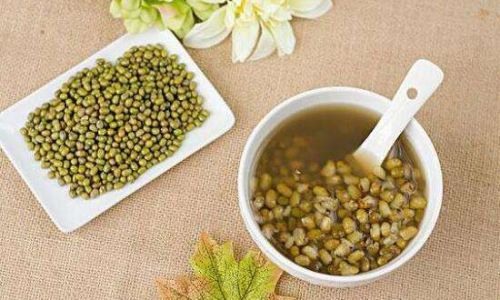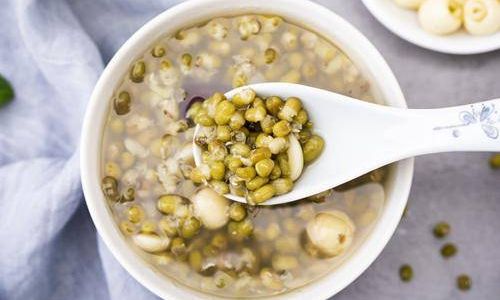Table of content
Introduction
Bagels, with their chewy interior, glossy crust, and endless flavor possibilities, have become a breakfast staple worldwide. Originating in 17th-century Poland, these circular delights have evolved from humble street food to a global sensation, gracing menus in bakeries, cafes, and home kitchens. While store-bought bagels are convenient, there’s an unparalleled satisfaction in crafting them from scratch—a process that blends science, tradition, and creativity. This comprehensive guide will walk you through every step of making authentic bagels, from mixing the dough to achieving that signature shine. Whether you’re a novice baker or a seasoned pro, this article equips you with the knowledge to master this iconic bread.
The Science Behind Bagels: Why They’re Unique
Bagels are not just any bread—they’re a culinary marvel defined by their dense, chewy texture and shiny exterior. This distinctiveness stems from two key processes: boiling and high-gluten flour. Unlike most breads baked directly, bagels undergo a brief boiling phase before hitting the oven. This step gelatinizes the starch on the surface, creating a caramelized crust and locking in moisture. Additionally, using bread flour (high in protein) ensures a robust gluten network, essential for that classic bounce-back texture.
Ingredients: Quality Matters
To make 12 medium bagels, gather the following:

Dough Ingredients
- 4 cups (500g) bread flour: High-protein flour develops gluten for chewiness.
- 2 tsp (8g) instant yeast: Jumpstarts fermentation.
- 1½ tbsp (20g) granulated sugar: Feeds yeast and aids browning.
- 2 tsp (12g) salt: Enhances flavor and controls yeast activity.
- 1¼ cups (300ml) warm water: Ideal temperature: 105–110°F (40–43°C).
- 1 tbsp (15ml) vegetable oil: For greasing the bowl.
Poaching Liquid
- 4 quarts (3.8L) water
- ½ cup (120g) honey or ¼ cup (60g) baking soda: Honey adds sweetness; baking soda enhances browning.
Optional Toppings
- Everything bagel seasoning
- Poppy seeds
- Sesame seeds
- Minced garlic or onions
- Coarse salt
Equipment Checklist
- Stand mixer with dough hook (or mixing bowl + elbow grease)
- Baking sheet
- Parchment paper or silicone mat
- Large pot for boiling
- Slotted spoon or spider strainer
- Pizza stone or baking steel (optional but recommended)
- Instant-read thermometer
- Pastry brush
Step 1: Mixing the Dough
- Activate the Yeast: In a small bowl, combine warm water (105°F), sugar, and yeast. Let sit 5–10 minutes until frothy. If no foam forms, your yeast may be inactive—start over.
- Combine Dry Ingredients: In a stand mixer bowl, whisk flour and salt.
- Mix Wet and Dry: Pour the yeast mixture and oil into the dry ingredients. Mix on low speed until a shaggy dough forms.
- Knead: Increase speed to medium-low. Knead 8–10 minutes until smooth and elastic. The dough should clear the bowl sides but stick slightly to the bottom. If too sticky, add 1 tbsp flour at a time; if stiff, add 1 tsp water.
Step 2: First Rise (Bulk Fermentation)
- Shape into a Ball: Lightly oil a clean bowl. Place the dough inside, turning to coat.
- Cover and Rise: Cover with plastic wrap or a damp towel. Let rise in a warm spot (70–75°F/21–24°C) for 1–1.5 hours, or until doubled in size. Patience is key here—underproofed dough yields dense bagels.
Step 3: Shaping the Bagels
- Punch Down the Dough: Gently deflate the dough to release air bubbles.
- Portion: Divide into 12 equal pieces (about 80g each). Use a kitchen scale for precision.
- Shape:
- Method 1 (Traditional): Roll each piece into a 10-inch rope. Overlap the ends by 1 inch, pinch to seal, and roll gently to fuse.
- Method 2 (Punch-Through): Flatten a piece into a disk. Poke a hole through the center with your thumb, then stretch the hole to 2–3 inches wide (it will shrink during proofing).
- Rest: Place shaped bagels on a parchment-lined baking sheet, spaced 2 inches apart. Cover loosely with plastic wrap.
Step 4: Proofing (Second Rise)
- Cold Proof (Recommended): Refrigerate bagels overnight (8–12 hours). This slow fermentation deepens flavor and improves texture.
- Quick Proof: Let rest at room temperature for 30–60 minutes until puffy.
Pro Tip: To test if bagels are ready for boiling, perform the float test: Drop a small dough ball into room-temperature water. If it floats within 10 seconds, they’re proofed.
Step 5: Boiling and Baking
- Preheat the Oven: To 425°F (220°C). If using a pizza stone, place it on the middle rack.
- Prepare the Poaching Liquid: In a large pot, bring water and honey (or baking soda) to a gentle simmer.
- Boil the Bagels:
- Working in batches, boil bagels for 1 minute per side. Use a slotted spoon to flip gently.
- The boiling time affects texture: 1 minute = chewier, 2 minutes = denser.
- Add Toppings: While wet, sprinkle seeds or seasonings onto the bagels. Press lightly to adhere.
- Bake: Transfer bagels to a parchment-lined sheet (or pizza stone). Bake 20–25 minutes, rotating halfway, until golden brown.
Step 6: Cooling and Storing
- Cool Completely: Let bagels rest on a wire rack for at least 30 minutes to prevent gumminess.
- Storage:
- Room Temperature: 2 days in an airtight bag.
- Freezer: 3 months. Slice before freezing for easy toasting.
Troubleshooting Common Issues
- Flat Bagels: Overproofed dough or insufficient gluten development.
- Dense Texture: Underkneading or too much flour.
- Pale Crust: Insufficient boiling time or low oven temperature.
- Hollow Centers: Overboiling or uneven shaping.
Flavor Variations to Experiment With
- Cinnamon Raisin: Add 1 tsp cinnamon and ½ cup raisins to the dough.
- Jalapeño Cheddar: Mix 1 cup shredded cheddar and 2 tbsp minced jalapeños into the dough.
- Blueberry Lemon: Fold in ½ cup dried blueberries and 1 tbsp lemon zest.
- Everything Bagel: Combine poppy seeds, sesame seeds, dried minced garlic, onion, and salt.
Serving Suggestions
- Classic: Cream cheese, lox, capers, and red onion.
- Sweet: Toasted with peanut butter and banana slices.
- Savory: Avocado mash, bacon, and a fried egg.
- Party-Ready: Slice into rounds for mini bagel pizzas or canapés.
The Art of Boiling: Why It’s Non-Negotiable
Boiling bagels is not mere tradition—it’s chemistry. The process:

- Sets the Crust: Gelatinized starch creates a barrier, preventing the bagel from expanding too much in the oven.
- Enhances Flavor: The Maillard reaction during baking intensifies caramelization.
- Creates Chew: Restricts oven spring, concentrating gluten strands.
Advanced Techniques for Bakers
- Sourdough Bagels: Substitute 20% of the bread flour with sourdough starter. Extend bulk fermentation to 4–6 hours.
- Wood-Fired Ovens: For artisan-style bagels, bake at 500°F (260°C) with steam for 2 minutes, then reduce heat to 450°F (232°C).
- Gluten-Free Option: Use a 1:1 gluten-free flour blend and increase xanthan gum to 1 tsp. Boil for 30 seconds per side.
The History of Bagels: From Polish Streets to Global Icon
Bagels trace their roots to 1683 Kraków, where a Viennese baker crafted them to honor Polish King Jan III Sobieski’s victory over the Ottomans. Their round shape symbolized unity and eternity. Jewish immigrants later brought bagels to New York in the late 1800s, where they thrived in Lower East Side bakeries. Today, bagels are a $1.2 billion industry in the U.S. alone, with flavors ranging from rainbow unicorn to pizza-inspired.
Conclusion: The Joy of Homemade Bagels
Making bagels is a labor of love—a dance between patience, precision, and playfulness. While the process demands time, the rewards are boundless: a kitchen filled with the aroma of fresh bread, the satisfaction of nailing that perfect chew, and the freedom to customize flavors. Whether you’re a purist or a pioneer, this guide arms you with the skills to elevate your bagel game. So preheat that oven, boil that water, and let the circle of bread magic begin.

Final Tip: Share your bagels with friends—they’re best enjoyed fresh, slathered with butter, and paired with laughter. After all, the humble bagel has united cultures for centuries. Now, it’s your turn to carry on the tradition.





0 comments